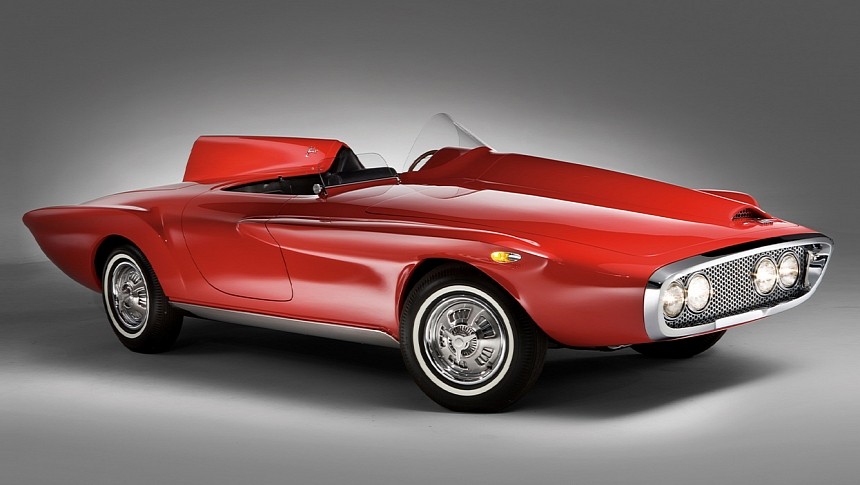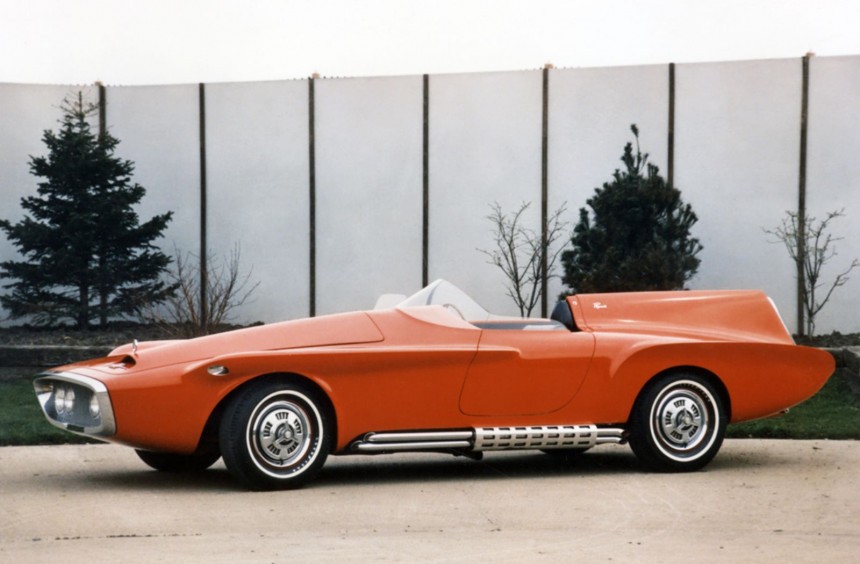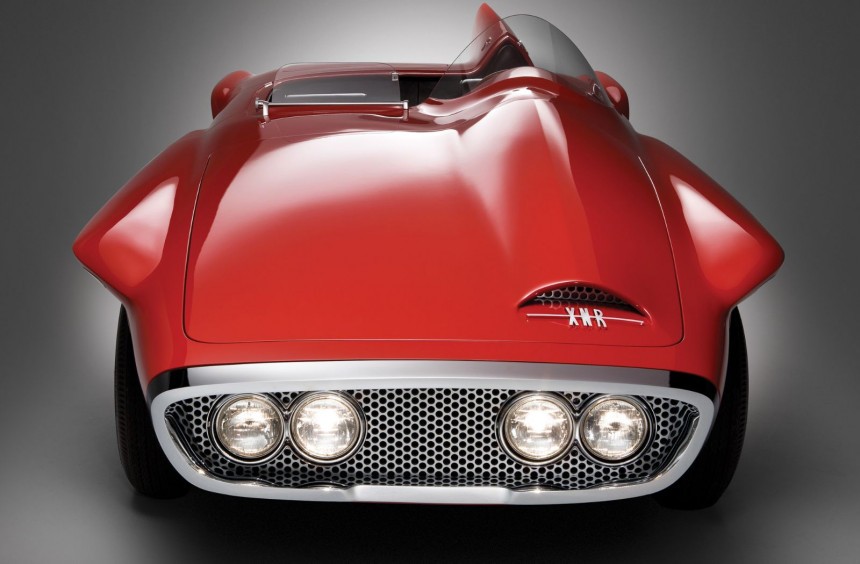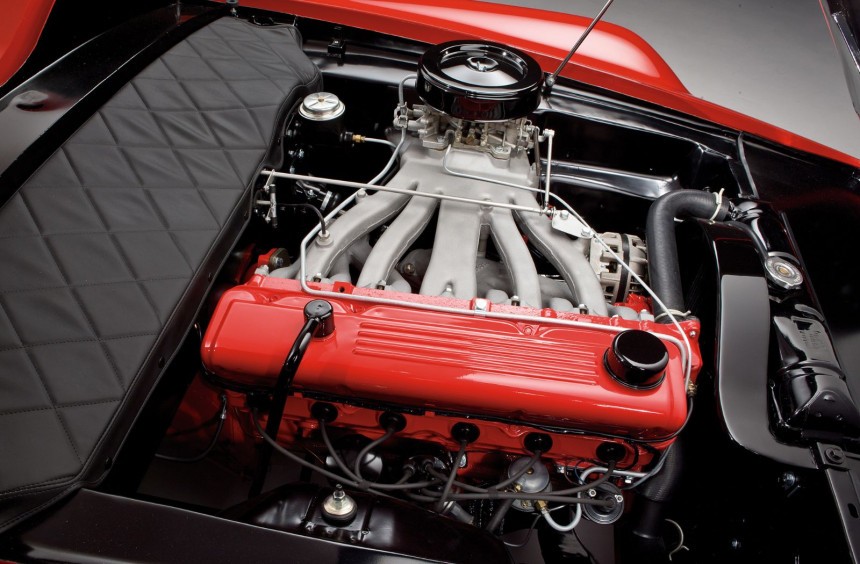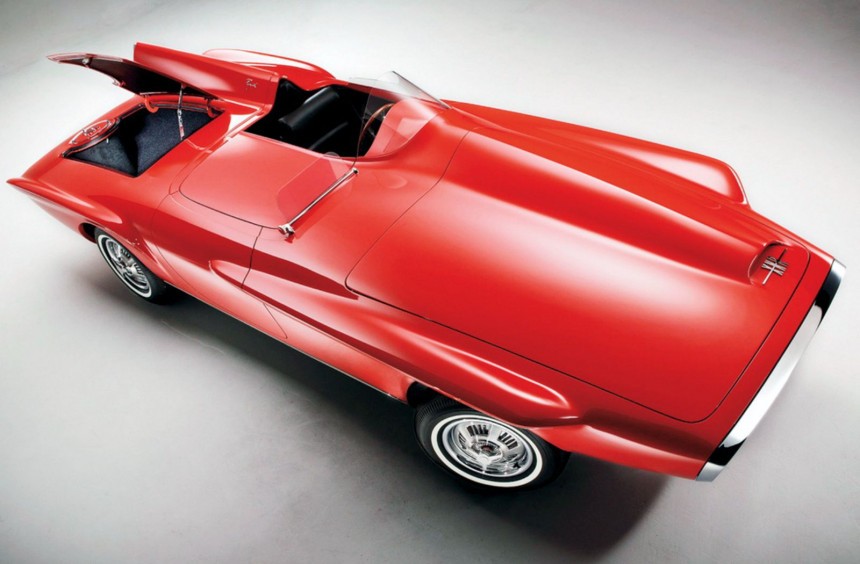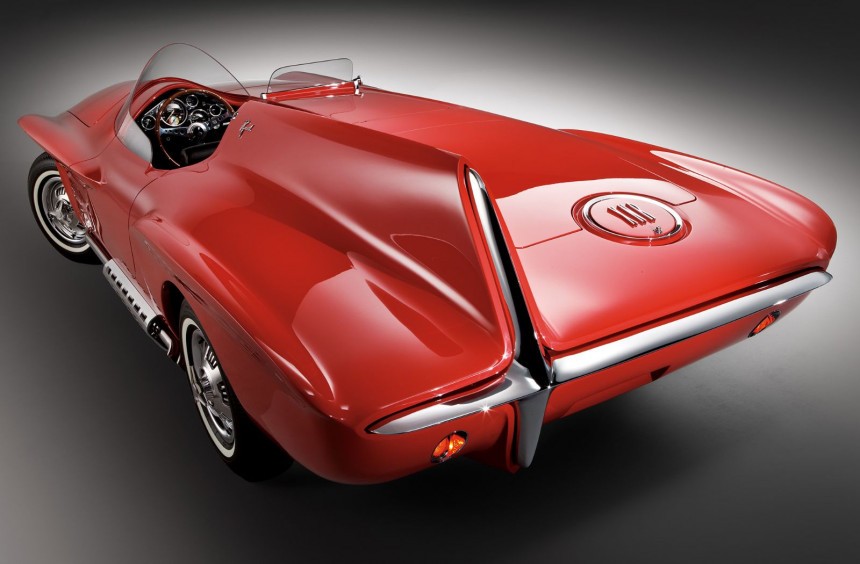Unveiled 63 years ago, this asymmetrical masterpiece that combined a gorgeous, Italian-built body with a NASCAR-spec engine was conceived to rival Chevy's Corvette.
Since the first Chevrolet Corvette hit the streets in 1953, big and small US carmakers have tried to develop a worthy rival.
Some of these attempts never made it past the prototype stage, while others went into production, but none managed to dethrone the mighty 'Vette of its pedestal. Seventy years and eight generations later, it remains America's favorite sports car and arguably the country's most famous automotive nameplate.
One of the earliest, most intriguing attempts to develop a worthy Corvette rival came from Plymouth, the now-defunct Chrysler division, which, at the time, had nothing in common with the world of sports cars.
The story of this fascinating concept car began in 1949 when Chrysler's president K.T. Keller decided that the corporation's brands desperately needed new designs to reinvigorate sales.
He brought in the forward-thinking designer Virgil Exner from Studebaker and gave him carte blanche to unleash his creativity.
During the next decade, Exner - interested in advanced aerodynamics and passionate about adding tailfins to cars - created a series of amazing concepts that revolutionized the corporation's styling and set the standard for the American automotive industry's post-war designs.
But, out of all Exner's futuristic concepts, the XNR (a disemvoweled acronym of his last name) remains the most exquisite.
Unveiled to the public at the 1960 New York Auto Show, the XNR was Virgil Exner's take on a thoroughbred sports car that could rival the C1 Corvette.
Surprisingly, it wasn't built on a bespoke tubular frame - customary for a sports car back then - but on a shortened and reinforced version of the compact Plymouth Valiant.
Exner and his team in Detroit put the chassis together, then shipped it to Italy, where Luigi "Gigi" Segre, of Italian coachbuilder Carrozzeria Ghia, supervised the bodywork and interior development.
The Italians handbuilt the XNR's body using steel rather than fiberglass -which made the job much harder, considering its extravagant shapes.
The two-seat roadster featured an asymmetrical design riddled with several types of Exner's favorite cue: the tailfin. The narrow front end received a mesh grille with dual headlights, while the hood was ornated with an offset scoop that ran the whole length of the panel, meeting the small, curved driver's windshield.
On each side, Exner designed a pair of horizontal, wing-like fins that accentuated the car's width, but unquestionably the most prominent feature was the big vertical fin mounted behind the driver.
The XNR didn't just look like a futuristic race car but also performed like one. During initial runs on Chrysler's test track, it reportedly reached a top speed of 142 mph (229 kph) with Exner himself behind the wheel and up to 146 mph (235 kph) when driven by a professional driver.
While those speeds weren't mind-blowing, even for a 1960 vehicle, they were impressive, considering that the concept was powered by a 170-ci (2.8-liter) Slant 6.
To be fair, it wasn't the same engine as that found in the production Valiant, but a NASCAR-spec unit that received some extensive modifications like Chrysler's Hyper Pak performance package. This package included a ram air intake manifold with a four-barrel carb, redesigned cast-iron exhaust headers, a hotter cam, and a revised valvetrain.
Though Chrysler never released an official output figure, several sources place its power potential in the 250 to 300 hp range.
Though the XNR was arguably the most popular concept in 1960, receiving praise from enthusiasts and the automotive press, Chrysler never planned to mass produce it. Instead, after completing its show car duties, management decided to send it to the crusher.
However, Virgil Exner was hellbent on saving it. After unsuccessfully attempting to buy the concept from Chrysler, he devised a plan to ship it back to Carrozzeria Ghia in Italy. This plan succeeded, and Ghia took possession of the XNR but eventually sold it to a private collector from Switzerland.
A few years later, the beautiful concept was sold again to Mohammad Reza Pahlavi, the last Shah of Iran. But, it turned out that the Shah wasn't too fond of the one-off, so the XNR switched owners a fourth time, ending up in the Middle East as part of the private collection of a Kuwaiti car dealer named Anwar al Mulla.
But if you thought this was the last time the XNR switched owners, think again. Al Mulla sold it to a Lebanese collector who allegedly stored it underground. It is unclear what happened with this sixth owner, but a teenager named Karim Edde found the concept car during the Lebanese civil war. In 2008, it was sent to RM Restorations in Canada, where it received a complete restoration.
After the restoration was completed in 2011, the XNR was shown to the public at the Amelia Island Concours d'Elegance. A few months later, it was the star attraction of the Pebble Beach Concours d'Elegance, where it received the Gran Turismo Trophy. Speaking of which, the XNR has appeared in multiple Gran Turismo video games, including Gran Turismo 7, the current installment of the celebrated franchise.
Virtual XNR aside, the real thing was sold for the final time at RM Sotheby's Monterey auction in 2012, fetching $935,000.
Mark Towle's Gotham Garage has also built two replicas, albeit both feature fiberglass bodies. The first is currently on display at the Petersen Automotive Museum in Los Angeles, California, while the second was sold to a private collector.
A beautiful example of revolutionary American design and Italian craftsmanship, the Plymouth XNR has defied all odds and managed to survive. Although it never got to challenge the Corvette in dealerships or on public roads, it remains one of the most intriguing concept cars in the history of the American automotive industry and arguably the most exquisite Mopar ever built.
You can learn more about this fascinating car in the YouTube video below by
Roam New Roads.
Some of these attempts never made it past the prototype stage, while others went into production, but none managed to dethrone the mighty 'Vette of its pedestal. Seventy years and eight generations later, it remains America's favorite sports car and arguably the country's most famous automotive nameplate.
One of the earliest, most intriguing attempts to develop a worthy Corvette rival came from Plymouth, the now-defunct Chrysler division, which, at the time, had nothing in common with the world of sports cars.
Created by one of America's most influential automotive designers
He brought in the forward-thinking designer Virgil Exner from Studebaker and gave him carte blanche to unleash his creativity.
During the next decade, Exner - interested in advanced aerodynamics and passionate about adding tailfins to cars - created a series of amazing concepts that revolutionized the corporation's styling and set the standard for the American automotive industry's post-war designs.
But, out of all Exner's futuristic concepts, the XNR (a disemvoweled acronym of his last name) remains the most exquisite.
Built by the renowned Italian coachbuilder Ghia
Surprisingly, it wasn't built on a bespoke tubular frame - customary for a sports car back then - but on a shortened and reinforced version of the compact Plymouth Valiant.
Exner and his team in Detroit put the chassis together, then shipped it to Italy, where Luigi "Gigi" Segre, of Italian coachbuilder Carrozzeria Ghia, supervised the bodywork and interior development.
The Italians handbuilt the XNR's body using steel rather than fiberglass -which made the job much harder, considering its extravagant shapes.
The two-seat roadster featured an asymmetrical design riddled with several types of Exner's favorite cue: the tailfin. The narrow front end received a mesh grille with dual headlights, while the hood was ornated with an offset scoop that ran the whole length of the panel, meeting the small, curved driver's windshield.
On each side, Exner designed a pair of horizontal, wing-like fins that accentuated the car's width, but unquestionably the most prominent feature was the big vertical fin mounted behind the driver.
Powered by an impressive inline-six
While those speeds weren't mind-blowing, even for a 1960 vehicle, they were impressive, considering that the concept was powered by a 170-ci (2.8-liter) Slant 6.
To be fair, it wasn't the same engine as that found in the production Valiant, but a NASCAR-spec unit that received some extensive modifications like Chrysler's Hyper Pak performance package. This package included a ram air intake manifold with a four-barrel carb, redesigned cast-iron exhaust headers, a hotter cam, and a revised valvetrain.
Though Chrysler never released an official output figure, several sources place its power potential in the 250 to 300 hp range.
It survived a civil war
However, Virgil Exner was hellbent on saving it. After unsuccessfully attempting to buy the concept from Chrysler, he devised a plan to ship it back to Carrozzeria Ghia in Italy. This plan succeeded, and Ghia took possession of the XNR but eventually sold it to a private collector from Switzerland.
A few years later, the beautiful concept was sold again to Mohammad Reza Pahlavi, the last Shah of Iran. But, it turned out that the Shah wasn't too fond of the one-off, so the XNR switched owners a fourth time, ending up in the Middle East as part of the private collection of a Kuwaiti car dealer named Anwar al Mulla.
But if you thought this was the last time the XNR switched owners, think again. Al Mulla sold it to a Lebanese collector who allegedly stored it underground. It is unclear what happened with this sixth owner, but a teenager named Karim Edde found the concept car during the Lebanese civil war. In 2008, it was sent to RM Restorations in Canada, where it received a complete restoration.
The XNR concept today
Virtual XNR aside, the real thing was sold for the final time at RM Sotheby's Monterey auction in 2012, fetching $935,000.
Mark Towle's Gotham Garage has also built two replicas, albeit both feature fiberglass bodies. The first is currently on display at the Petersen Automotive Museum in Los Angeles, California, while the second was sold to a private collector.
A beautiful example of revolutionary American design and Italian craftsmanship, the Plymouth XNR has defied all odds and managed to survive. Although it never got to challenge the Corvette in dealerships or on public roads, it remains one of the most intriguing concept cars in the history of the American automotive industry and arguably the most exquisite Mopar ever built.
You can learn more about this fascinating car in the YouTube video below by
Roam New Roads.
